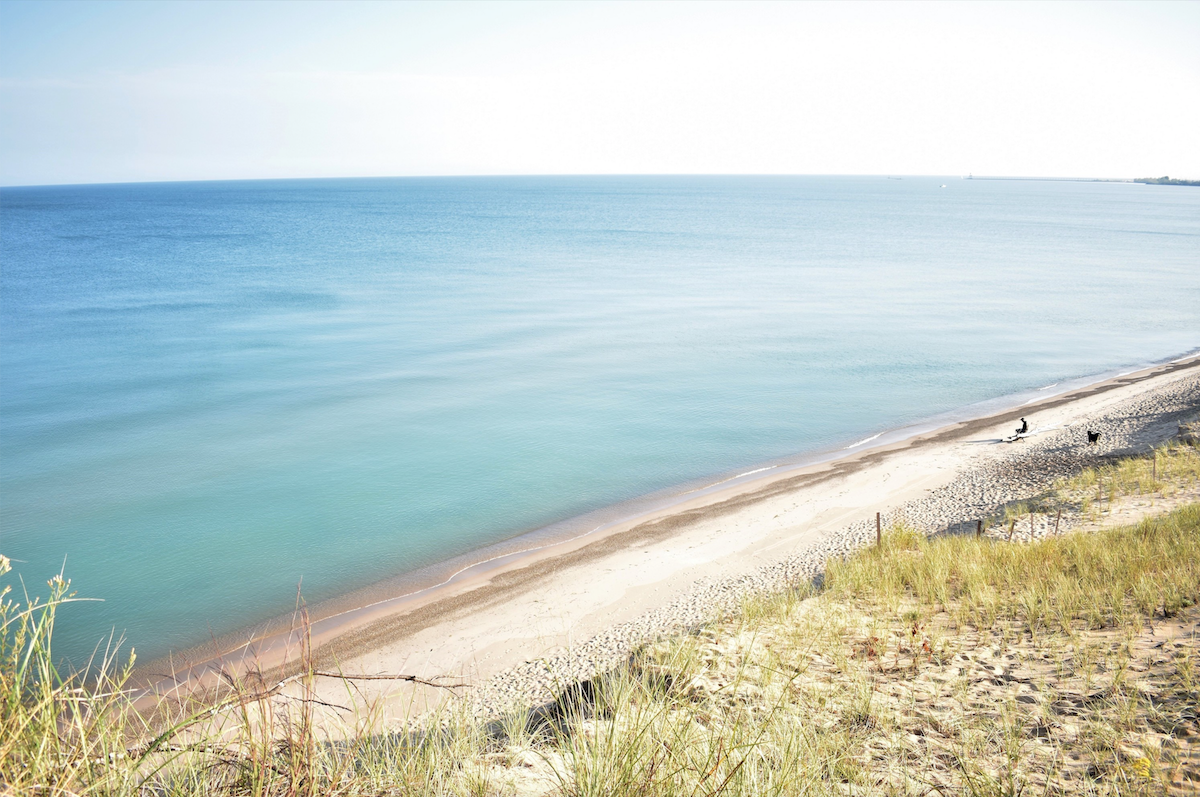
That’s right — up until recently, the Hoosier State did not contain any of America’s sixty national parks. Efforts to establish the 25-mile long area along Lake Michigan’s southern shore as a national park began back in 1916, but were put on hold after the start of World War I. In 1966, the area was first authorized as a National Lakeshore. Just over 100 years later, as part of appropriations legislation signed into law by President Trump on February 15th of this year, Indiana Dunes National Lakeshore officially became Indiana Dunes National Park, making it America’s 61st national park, and Indiana’s first.
The newly appointed national park contains ten different ecosystems within just 15,000 acres, including sand dune, wetland, river, forest, and prairie, and has recorded 350 different bird species, as the park is an excellent stop for migratory birds that follow alongside the lakeshore on their journey. Birds are monitored on an annual basis at several different locations around the park to track population trends. Only two and a half hours away Indianapolis and just an hour away from Chicago, the park draws in a crowd similar in size to that of Mount Rushmore— on average, a whopping 2.5 million visitors per year.
Though the park was recently promoted to “national park status” and is relatively small, it hosts one of the biggest birding festivals in the country, the Indiana Dunes Birding Festival. Having drawn in more than 850 people from all over the country for its sixth annual event last year, the festival donates all proceeds to the Indiana Audubon Society.
Whether you’ve already visited the park in years past or have added it to your list of dream birding destinations, it’s worth noting that with fifteen miles of beaches, large sand dunes that overlook and offer beautiful views of Lake Michigan, and groves of globally rare black oak savanna and maple sugar forests, Indiana Dunes National Park is a place you won’t want to miss if given the opportunity to visit. Here are three great places in the park to visit not only for the scenery, but for the birds you may spot along the way.
Great Marsh Trail System
An excellent area to be on the lookout for Coots, Mallards, Wood Ducks, Green and Blue Herons, Kingfishers and Rusty Blackbirds, the Great Marsh Trail System is a critical habitat for breeding and migratory birds alike, and offers views of the largest interdunal wetland in the Lake Michigan watershed. Much of the marsh was drained in the early 20th century for residential and agricultural use, but has undergone restoration since 1998. It’s also a popular nesting area for Sandhill Cranes, and the Great Marsh Observation Deck provides a bird’s eye view of the entire restored wetland.
Cowles Bog Wetland Complex
Designated as both an Important Bird Area and a National Natural Landmark, this 8,000-year-old fern wetland is the perfect habitat in which to spot Marsh Wrens, American and Least Bitterns, and Virginia Rails. Great efforts have been made to restore and protect the native plant life in the bog to ensure that the ecosystem will continue to support birds and other animals that rely on this area.
Paul H. Douglas Trail
Previously known as Miller Woods, Paul H. Douglas Trail winds through wetlands, black oak savanna forests and beaches. Although many parks ask that you stay on the designated trails, this is one where you’ll definitely want to — poison ivy is abundant on the trail edges. As you pass through several different habitats, it’s not uncommon to encounter Scarlet Tanagers, Red-headed Woodpeckers and Red-eyed Vireos in the spring and summer months. Occasionally, you may even spot a beaver as you pass through the wetlands.
Longshore Birding Platform
Enjoy stunning lake views and one of the most diverse birding spots in the park. Known as the pinnacle of birding in the park, the Longshore Birding Platform is used to track bird populations during migration, and sits atop a sixty foot dune on the park’s far west side, overlooking Lake Michigan. Over the years, this platform has documented 250 species of birds, including Piping Plover, Pacific Loon, Bohemian Waxwing, Scissor-tailed Flycatcher, Swainson’s Hawk, and more.
Indiana Dunes National Park is a wonderful place for birders of all skill levels to see a variety of bird species. Whether you watch hawks during migration from the top of a sand dune, observe Great Blue Herons along the shoreline, or look for Kingfishers in the Great Marsh, you’re sure to have an amazing birding experience that you won’t easily find elsewhere. So, what are you waiting for? Get out and visit this incredible ecosystem and enjoy birding in Indiana’s first national park!